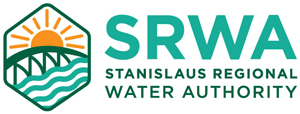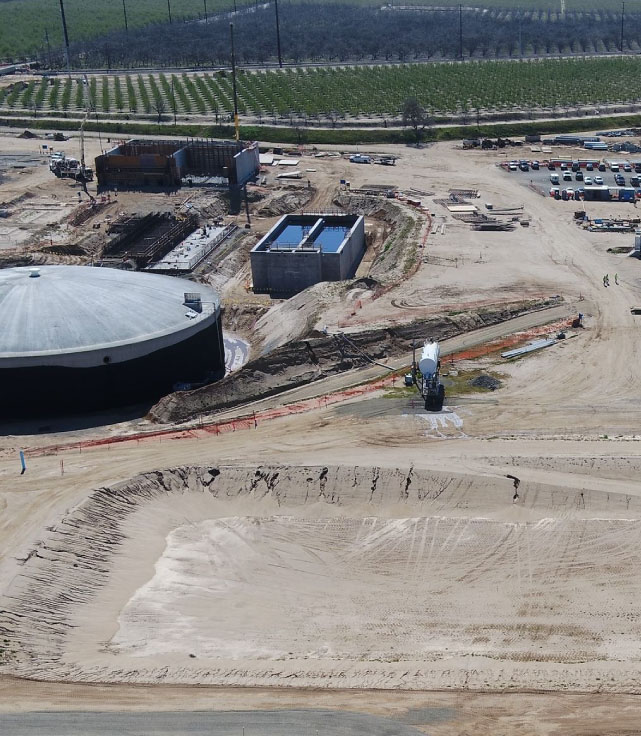1. What is the Stanislaus Regional Water Authority (SRWA)?
The Cities of Ceres and Turlock signed a Joint Powers Agreement (JPA), in cooperation with the Turlock Irrigation District (TID), to form the Stanislaus Regional Water Authority (SRWA), a governmental agency, to develop a multi-benefit Regional Surface Water Supply Project.
2. What is the Regional Surface Water Supply Project (Project)?
The Project is a collaborative effort to provide treated drinking water from the Tuolumne River to supplement the cities’ existing groundwater supplies.
3. Why does the region need this Project?
The Cities of Ceres and Turlock currently rely entirely on groundwater as their source of drinking water. Some of this groundwater contains contaminants that currently require or will require treatment processes to remove these impurities prior to consumption. As groundwater quality standards become increasingly stringent, the cost for treatment and replacement wells will continue to increase. Furthermore, groundwater is a limited resource that will not meet future demands. Finally, State of California requirements for sustainable groundwater management set forth under the Sustainable Groundwater Management Act (SGMA) may mean that the cities will have to reduce their dependence on groundwater.
4. What are the benefits of this Project to the Cities’ residents and businesses?
- Diversification of the Cities’ water supply
- Clean, safe, reliable drinking water
- More resilient and sustainable water source to enhance each Cities’ economic prosperity and quality of life
- Improved water quality (reduced hardness)
- Compliance with increasingly stringent water quality regulations
- Benefits to salmon through increased river flow in the Upper Tuolumne River
- Potential to provide water to other future regional participants
5. Why aren’t other Cities participating?
Ceres and Turlock have come together to build the Project and will continue to seek opportunities to partner with other regional interests.
6. Is Tuolumne River water safe to use for drinking, cooking and bathing?
Without treatment, no surface water is considered safe for consumption. With the Regional Surface Water Supply Project, Tuolumne River water will be treated at a new robust, state-of-the-art water treatment plant to meet all current federal and state drinking water standards. Unlike wells, the plant can be easily modified to comply with future changes in drinking water standards.
7. Where is the Project located?
The Project’s northerly bounds are adjacent to the Tuolumne River near Fox Grove Park just north of the intersection of Geer Road and Hatch Road, where water will be pumped from the Tuolumne River to a new water treatment plant to be located just east of Fox Grove Park. After treatment, the water will be distributed in pipelines to the Cities.
8. Are there other alternatives to this Project?
Over the years, the Cities have investigated a number of alternatives to the Project. None of these options were considered as reliable, technically feasible, cost-effective or as sustainable as a drinking water plant on the Tuolumne River.
If the Cities of Ceres and Turlock continue to rely solely on groundwater as the source for their drinking water, monthly costs to treat groundwater to current and future drinking water standards will continue to increase dramatically. An analysis of the life-cycle costs shows that the delivery of only groundwater will be significantly more expensive than the Project over a 20-year evaluation period.
In addition, declining groundwater levels and deteriorating groundwater quality shows the aquifer is overutilized and may not be a reliable water supply in the long-term.
The SRWA evaluated using available excess capacity at the Modesto Irrigation District (MID) water treatment plant and constructing a pipeline across the Tuolumne River as an interim alternative to the Project. This option would only be a short-term solution as the City of Modesto’s long-term needs would take priority once their water demands increase. At that point, the SRWA would have to build their own project at a significantly higher cost. In addition, the Cities would have incurred additional costs that could not be recovered.
9. How much is this Project estimated to cost?
Currently, the Project is estimated to cost $230 million, which includes the design and construction of the regional Project facilities. Excluded from the costs are the local improvements required by both Cities to integrate this new supply into their existing water systems. Ceres’ portion of this cost is approximately $77 million and Turlock’s portion is approximately $147 million. An additional $6 million will be contributed by the Turlock Irrigation District for its’ portion of the Project.
10. How is the Project being funded?
In late 2017, the Cities of Ceres and Turlock both increased water rates to pay for the construction and ongoing operation of the Project and other water system needs. Those rates are intended to collect the necessary revenue to pay for debt service on borrowed money and for annual operational costs. The Project has received a $27.75 million grant from Proposition 68, the Parks, Environment, and Water Bond. SRWA executed a State Revolving Fund (SRF) low interest loan with the State Water Resources Control Board for $184.9 million at an interest rate of 1.2%. The Project was also granted $5.8 million in Proposition 1 Integrated Regional Water Management Implementation funding. The SRWA continues to seek other sources of funding to reduce the Project’s impacts on the ratepayers.
11. What is being done to reduce the estimated Project costs?
The SRF loan with a 1.2% interest rate saves Ceres and Turlock customers nearly $100 million over the life of the 30-year loan. The SRWA is actively pursuing available funding sources for the Project to minimize rate impacts to customers. These efforts include both State and federal grants. The SRWA also sought and received legislative approval to utilize the design-build method to maximize the efficiencies of the design and construction process to ensure the most cost-effective process for completing the project.
12. Project Schedule
Design is complete and the Project is currently under construction. Construction is slated for completion in early 2023 and operations is expected mid-2023.
13. How will the public be impacted by construction?
The greatest impact will be during pipeline construction in roadways leading to the Cities. As such, traffic control will be in place for the protection of the traveling public. Regular construction updates are available on the Stanislaus Regional Water Authority website at: stanrwa.com.


